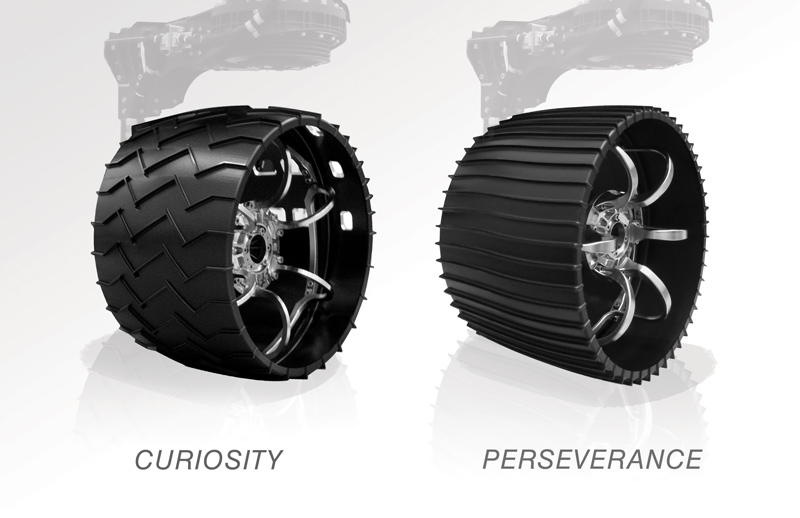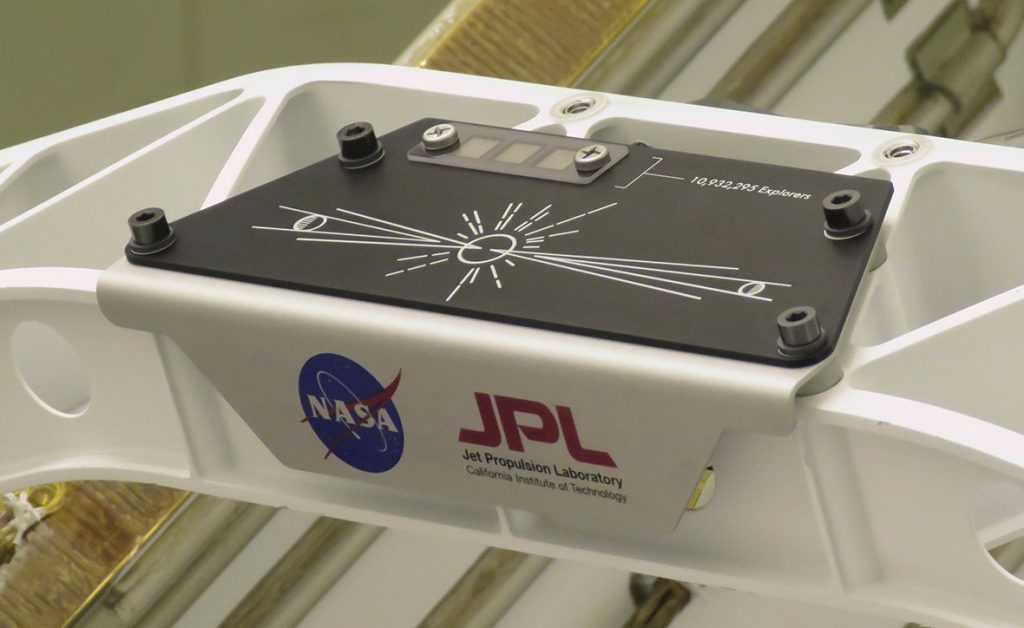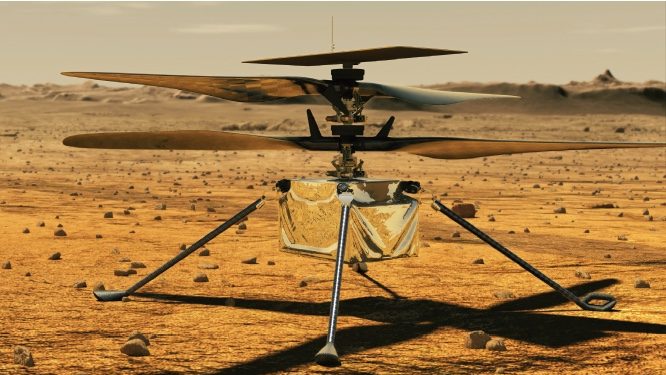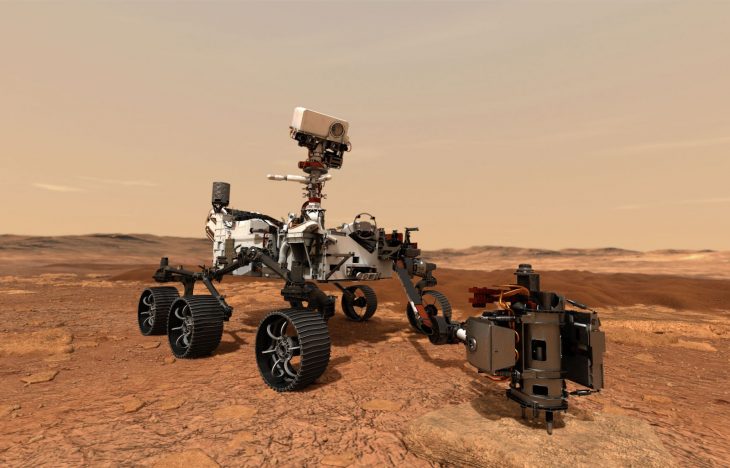The Mars 2020 Perseverance rover mission is part of NASA’s Mars Exploration Program, a long-term effort of robotic exploration of the Red Planet. Each Mars mission is part of a continuing chain of innovation, relying on past missions for proven technologies and contributing its own technical developments to future missions. As with previous missions, aluminum and light metals play a key role in the design of many critical structures and components.
The Perseverance mission will focus on the next step of the high-priority science goals for Mars exploration (including key questions about the potential for life on Mars). The Perseverance rover will be able to drill for core samples of rocks and soils, as well as provide opportunities to demonstrate technologies that address the challenges of future human expeditions to Mars, such as producing oxygen from the Martian atmosphere, identifying other resources (for example, subsurface water), improving landing techniques, and characterizing weather, dust, and other potential environmental conditions that could affect future astronauts living and working on Mars.
The mission is timed for a launch opportunity in July/August 2020 when Earth and Mars are in good positions relative to each other for landing on Mars.
Getting to Mars
Launch Vehicle: The Perseverance rover will be launched with a two-stage Atlas V-451 rocket, provided by United Launch Alliance. NASA selected this rocket because it has the right liftoff capability for the “heavy weight” requirements for the mission.
The Atlas V is the newest iteration of the Atlas family of rockets. The rocket features a common core booster that is 3.8 m (12.5 ft) in diameter and 32.5 m (106.5 ft) long. The booster’s tanks are constructed of isogrid aluminum barrels, spun-formed aluminum domes, and intertank skirts — which are structurally stable when unpressurized.
An aluminum nose cone protects the launch payload, and the payload clearance and vehicle structural stability are enhanced by the all-aluminum forward load reactor (FLR).
Aeroshell: Once the Perseverance rover travels 314 million miles (505 million km) to reach Mars, it will need to be able to land safely on the planet’s surface. The aeroshell — together with the lander and the rover — represents the entry vehicle, protecting the equipment inside from the intense heat generated during entry into the Martian atmosphere.
The aeroshell is principally comprised of a heat shield and backshell. It is made out of an aluminum honeycomb structure sandwiched between graphite-epoxy face sheets, with the outside covered in a layer of phenolic honeycomb.

Parachute: The rover’s lander also features a 70.5 ft (21.5 M) diameter supersonic parachute, housed within an aluminum canister cradled atop the aeroshell, which will ensure a safe and controlled landing on the planet surface.
Perseverance Rover
Because hardware cannot be repaired once the Perseverance rover is on Mars, the team is building a vehicle that can survive for years on a planet with punishing temperature shifts, constant radiation, and ever-present dust. Based on the Mars Science Laboratory’s Curiosity rover configuration — which was comprised of an aluminum body and wheels, held together with aerospace fasteners — the new Perseverance rover is a car-sized vehicle, about 10 ft long (not including the arm), 9 ft wide, and 7 ft tall (about 3 m long, 2.7 m wide, and 2.2 m tall). However, at 2,260 lbs (1,025 kg), it weighs less than a compact car.
Aluminum Wheels: The Perseverance rover features six wheels, which have been reengineered for the 2020 mission in order to make them more robust, due to the the wear and tear the Curiosity rover wheels endured while driving over sharp, pointy rocks.
Machined out of a block of flight-grade aluminum, the Perseverance wheels are slightly larger in diameter and narrower, 20.7 inches (52.6 cm) versus 20 inches (50.8 cm). The wheels also have twice as many treads and are gently curved instead of chevron-patterned. The wheels are mounted on titanium legs and include titanium spokes for springy support.
Extensive testing in the Mars Yard at NASA’s Jet Propulsion Laboratory, which built the rover and manages operations, has shown the new Perseverance wheels better withstand the pressure from sharp rocks and grip just as well or better than Curiosity’s when driving on sand.

Aluminum Plate: Nearly 11 million names have been etched on silicon chips secured onto an anodized aluminum plate on the Mars rover as part of NASA’s “Send Your Name to Mars” campaign. The names were stenciled by electron beam onto three fingernail-sized silicon chips. According to NASA, there is a message stating “Explore As One” written in Morse code on the plate.

Mars Helicopter

The Perseverance rover will include a twin-rotor, solar-powered helicopter, called Ingenuity, which will test – for the first time ever – powered flight in the thin Martian air. If successful, the helicopter will enable scientists to achieve a new perspective on a region’s geology and even allow them to peer into areas that are too steep or slippery to send a rover.
Weighing in at no more than 4 pounds (1.8 kilograms), the helicopter is comprised of more than 1,500 individual pieces of carbon fiber, flight-grade aluminum, silicon, copper, foil and foam. The helicopter and its delivery system are connected to an aluminum plate on the rover’s belly, which also includes a cover to shield the helicopter from debris during entry, descent, and landing.

